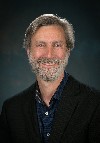
I am a Distinguished University Professor in the Department of Astronomy at the Ohio State University in Columbus, Ohio. I am also a member of Ohio State's Center for Cosmology and AstroParticle Physics.
I am an observationally oriented theorist and work mainly on large scale structure, galaxy formation, the intergalactic medium, the history of the Milky Way galaxy and origin of the chemical elements, and observational probes of the matter and energy content and initial conditions of the universe.
I have been on the faculty at Ohio State since January, 1995, and I served as department chair from 2015-2024 (with a one-year break in the middle). Prior to OSU, I was an undergraduate at Yale University, a graduate student at Princeton University, a postdoc at Cambridge University, and U.C. Berkeley, and a long term member at the Institute for Advanced Study. For details, see my curriculum vitae.
For astronomers, the best summary of my research is the list and brief description of my most cited publications. One of these years I'll write an actual narrative summary. Many of the highlights are in this DESI blog post, generously written by my former students Jeremy Tinker and Zheng Zheng. You can find a link to all of my scientific publications here.
One of my most satisfying professional roles is to be an advisor and mentor for graduate students and postdocs.
A lot of my research involves the Sloan Digital Sky Survey (SDSS). I joined the SDSS in 1992, when I was a postdoc at the IAS, where I worked on creating simulated data, devising the galaxy target selection algorithms, survey strategy and software, and proposal writing. I became one of the project's first External Participants when I moved to Ohio State in 1995, and I served as the first SDSS Scientific Publications Coordinator. Ohio State became an institutional member of the SDSS in 2005, and I was elected the Collaboration Spokesperson for SDSS-II (2005-2008), a program that completed the original goals of the SDSS and carried out additional surveys of distant supernovae and the Milky Way galaxy. From 2007-2014 I served as the Project Scientist for SDSS-III, a program of four surveys that used the SDSS facilities to investigate new scientific areas, including precision measurement of the cosmic expansion history and chemical evolution of the Milky Way. I have served on steering committees and advisory councils for SDSS-IV and SDSS-V.
The SDSS galaxy survey has been the main target for my work on interpretation of galaxy clustering, and some of my work on galaxy formation has also been aimed at SDSS data. The Dark Energy Spectroscopic Instrument is now mapping the 3-d distributions of galaxies and intergalactic gas on a still grander scale. The APOGEE surveys of SDSS-III and SDSS-IV have inspired much of my recent work on Galactic chemical evolution and the origin of the elements. SDSS-V is taking these ambitious maps of the Milky Way and its closest neighbors much further still. I have also been involved for many years with the Nancy Grace Roman Space Telescope, which will produce extraordinary new maps of the Milky Way, nearby galaxies, and the distant universe when it is launched in the mid-2020s.
Since 2004, I have collaborated with MacArthur Award winning artist Josiah McElheny on the design of cosmologically inspired sculptures, which have appeared in museums and gallery exhibitions in Columbus, New York, Chicago, Rochester, Seattle, Phoenix, London, Madrid, Boston, Houston, and Stanford. You can find some images, a description of the projects, and links to other accounts of the sculptures and our collaboration here. Four of these sculptures represent the ideas of modern cosmology in a form inspired by the Lobmeyr chandeliers of the Metropolitan Opera House. The fifth represents a core sample of the universe in a form inspired by the fiber plugplates of the SDSS, and by circuitous routes it draws on the ideas of the communist revolutionary Auguste Blanqui and the author Jorge Luis Borges.
I was also a science consultant for the film Dark Matter, an independent film written by Billy Shebar and Chen Shi-Zheng and starring Liu Ye, Aidan Quinn, and Meryl Streep. And you can look here for some of my less serious treatments of cosmology and astrophysics, the most infamous of which is The Dark Matter Rap.
Updated: 2024 October